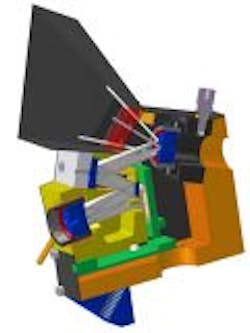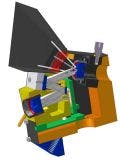UAVs to benefit from zoom objective with deformable mirrors
Unmanned aerial vehicles (UAVs) deployed on landscape analysis missions carry optical measuring equipment that must operate free of chromatic aberration. To address this need, researchers at the Fraunhofer Institute for Photonic Microsystems IPMS (Dresden, Germany) have now designed an all-reflective zoom objective with deformable mirrors.
A small UAV can capture the typical green of a coniferous forest or the radiated heat from a town. The objectives in its on-board measuring equipment must function free of chromatic aberration across a wide spectral range – from the UV through to the near and medium IR range.
Given this criteria, conventional lens systems composed of several lens elements are of limited use. When required to image a wide spectral range, the image quality drops--the image suffers from color fringing and becomes blurred. Traditionally, specific lenses have been used for each different spectral band. However, the difficulty is that UAVs can only carry a limited amount of weight.
Researchers from the IPMS are currently working to make it possible to capture images free from chromatic aberration in a number of spectral ranges using a single system. This would have the advantage of prolonging the battery’s life and increasing the aircraft’s endurance.
IPMS group manager Heinrich Grüger says: “We’ve come up with a design for a new objective in which we’ve used mirrors instead of standard lens elements.” The objective is comprised of four mirrors, arranged to avoid obscuration--this produces a higher-contrast image. Two deformable mirrors take care of the triple zoom range with no loss of image quality. The new design eliminates the need for elaborate mechanical guides within the lens barrel.
Grüger believes the new objective is potentially highly marketable: “Both the automation technology sector and the automobile and equipment engineering sector would profit from this type of objective.” Suitable deformable mirrors will have to be created--conventional optical mirrors are rigid.
Nevertheless, the researchers have already been able to demonstrate the optical performance of the objective: they built three identical setups with three different focal lengths in which the deformable mirrors were replaced by conventional rigid mirrors.
Posted by Vision Systems Design

